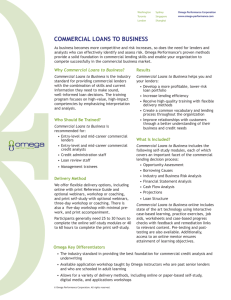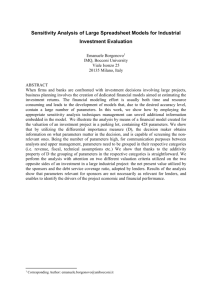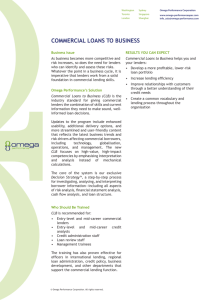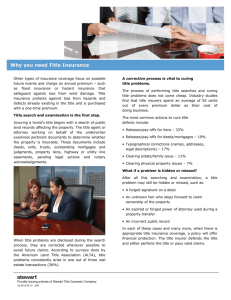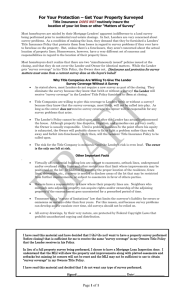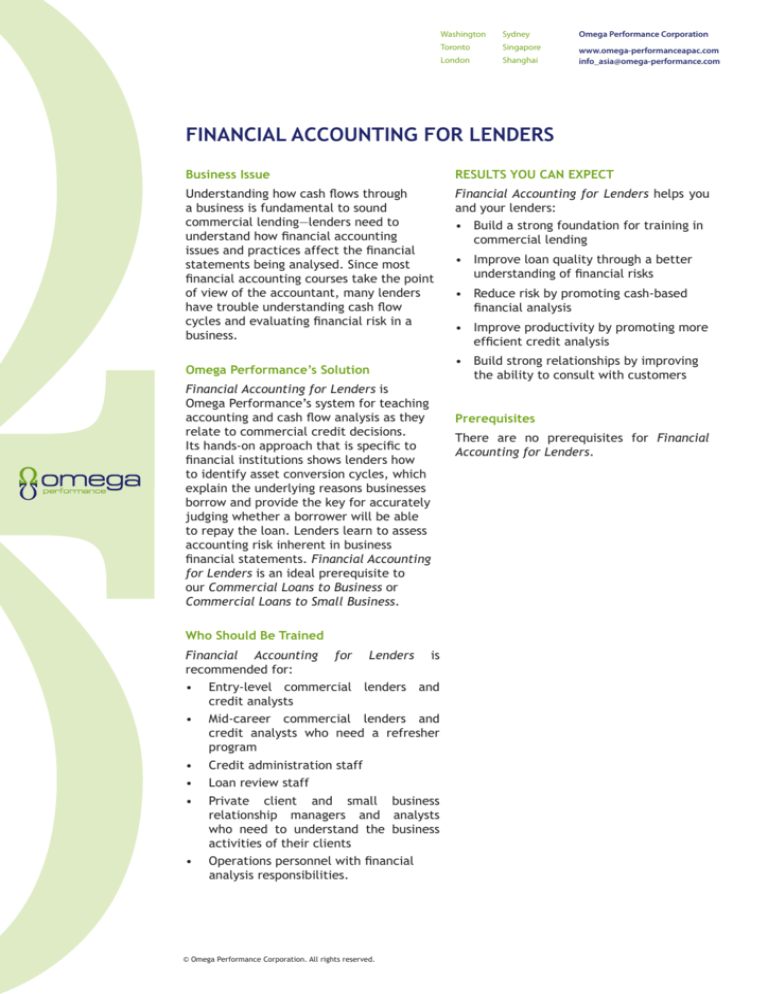
Washington
Sydney
Omega Performance Corporation
Toronto
Singapore
London
Shanghai
www.omega-performanceapac.com
info_asia@omega-performance.com
FINANCIAL ACCOUNTING FOR LENDERS
Business Issue
RESULTS YOU CAN EXPECT
Understanding how cash flows through
a business is fundamental to sound
commercial lending—lenders need to
understand how financial accounting
issues and practices affect the financial
statements being analysed. Since most
financial accounting courses take the point
of view of the accountant, many lenders
have trouble understanding cash flow
cycles and evaluating financial risk in a
business.
Financial Accounting for Lenders helps you
and your lenders:
• Build a strong foundation for training in
commercial lending
Omega Performance’s Solution
Financial Accounting for Lenders is
Omega Performance’s system for teaching
accounting and cash flow analysis as they
relate to commercial credit decisions.
Its hands-on approach that is specific to
financial institutions shows lenders how
to identify asset conversion cycles, which
explain the underlying reasons businesses
borrow and provide the key for accurately
judging whether a borrower will be able
to repay the loan. Lenders learn to assess
accounting risk inherent in business
financial statements. Financial Accounting
for Lenders is an ideal prerequisite to
our Commercial Loans to Business or
Commercial Loans to Small Business.
Who Should Be Trained
Financial Accounting for Lenders is
recommended for:
• Entry-level commercial lenders and
credit analysts
•
Mid-career commercial lenders and
credit analysts who need a refresher
program
•
Credit administration staff
•
Loan review staff
•
Private client and small business
relationship managers and analysts
who need to understand the business
activities of their clients
•
Operations personnel with financial
analysis responsibilities.
© Omega Performance Corporation. All rights reserved.
• Improve loan quality through a better
understanding of financial risks
• Reduce risk by promoting cash-based
financial analysis
• Improve productivity by promoting more
efficient credit analysis
• Build strong relationships by improving
the ability to consult with customers
Prerequisites
There are no prerequisites for Financial
Accounting for Lenders.
Washington
Sydney
Omega Performance Corporation
Toronto
Singapore
London
Shanghai
www.omega-performanceapac.com
info_asia@omega-performance.com
FINANCIAL ACCOUNTING FOR LENDERS
What is Included
The five self-study modules of Financial
Accounting for Lenders teach participants
to understand accounting and cash flow
analysis from the lender’s perspective:
Financial Reporting introduces the
primary financial statements (balance
sheet, income statement, owner’s equity,
and cash flow) and the notes and identifies
the connections among these. A key focus is
on issues concerning the financial reporting
environment, including guidance and the
roles of organisations that influence GAAP,
the role of management and the role of
the CPA in audit and attest services and
in review services. The various levels of
assurance to a lender from independent
accountant opinions are described.
Introduction to Accrual Accounting
concentrates on the fundamentals of
accounting for business activities over
time. Timing differences between actual
cash flow and recognition are described
and illustrated through the use of balance
sheet and income statements. This module
introduces the principles of sources
and uses of cash and provides simple
techniques to trace cash through common
business activities.
Accounting for the Operating Cycle
illustrates the operating cycle as a
model for getting behind the numbers
to understand business activities and
risks. The focus is on evaluating revenue
and expense recognition practices and
understanding the cash flow implications
on accounts receivable, inventory and
cost of goods sold. This module also
covers reporting requirements for other
comprehensive income and reporting
requirements for public companies.
© Omega Performance Corporation. All rights reserved.
Accounting for the Capital Investment
Cycle and Other Assets introduces the
capital investment cycle as a model and
the impact of the capital investment cycle
on cash flows related to fixed assets,
other long term assets including goodwill
and other intangibles, and depreciation
and amortisation. This module introduces
calculations to determine the cash effect
of sale of fixed assets with an emphasis on
valuation and impairment of fixed assets
and goodwill assets.
Accounting for Liabilities and Equity
examines various types of long and shortterm liabilities including information
and disclosure of commitments and
contingencies and other potential
obligations. Participants examine the
cash flow implications of various stock
transactions and how different tax
treatments affect a company’s revenue,
expenses, and profitability.
Delivery Options
To effectively implement Financial
Accounting for Lenders, Omega
Performance recommends one of four
approaches: self-study only, self-study with
coach, self-study plus two-day workshop,
or online with print accompaniment.
Participants generally need 35 to 40 hours
to complete the self-study modules.
All the content for Financial Accounting for
Lenders is available online, including preand post-testing, online progress checks,
and online skill assessment corresponding
to each module of content, with feedback
and remediation links to relevant content.


